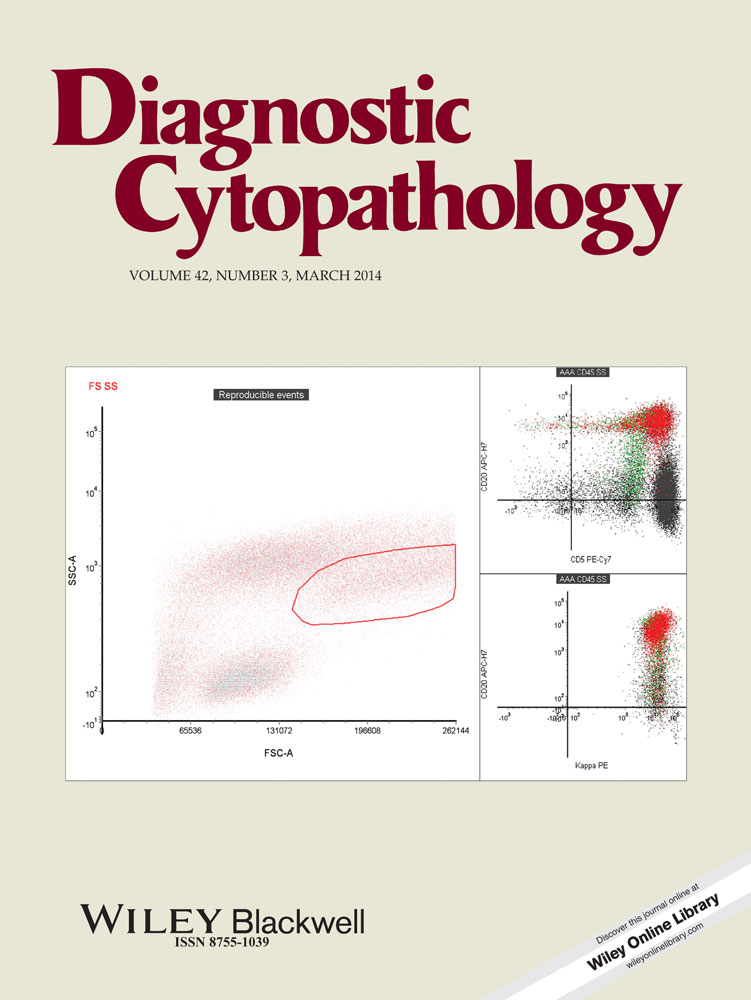The usefulness of S100P, mesothelin, fascin, prostate stem cell antigen, and 14-3-3 sigma in diagnosing pancreatic adenocarcinoma in cytological specimens obtained by endoscopic ultrasound guided fine-needle aspiration
Abstract
Endoscopic ultrasound-guided fine-needle aspiration (EUS-FNA) of the pancreas is an efficient and minimally invasive procedure for the diagnosis and staging of pancreatic adenocarcinoma. Because of some limitations of EUS-FNA in diagnosis of well-differentiated or early stage cancers, the purpose of this study is to assess the added benefit of immunohistochemistry. We studied five proteins overexpressed in pancreatic adenocarcinoma, namely, prostate stem cell antigen, fascin, 14-3-3 sigma, mesothelin and S100P utilizing immunohistochemistry on paraffin sections from cellblocks obtained by EUS-FNA. Sixty-two cases of EUS-FNA of the pancreas that had follow-up histological and/or clinical diagnosis and sufficient material in cell blocks were included. Using histological diagnosis and/or clinical outcome as the reference standard, EUS-FNA shows the highest sensitivity (95%) and specificity (91%) and is superior to any marker in this study. Among five antibodies, S100P reveals the best diagnostic characters showing 90% of sensitivity and 67% of specificity. Fascin shows high specificity (92%) but low sensitivity (38%). Mesothelin has a moderate sensitivity (74%) and low specificity (33%), PSCA and 14-3-3 show high sensitivity but zero specificity. S100P and mesothelin were useful in nine indeterminate cases. S100P correctly predicted six of seven cancers and one of one without cancer and mesothelin correctly diagnosed five of seven cancers and one of two noncancers in this group. EUS-FNA cytomorphology is superior to any of the immunohistochemical markers used in this study. Use of S100P and mesothelin in cytologically borderline cases can increase the diagnostic accuracy in this group. Diagn. Cytopathol. 2014;42:193–199. © 2011 Wiley Periodicals, Inc.




